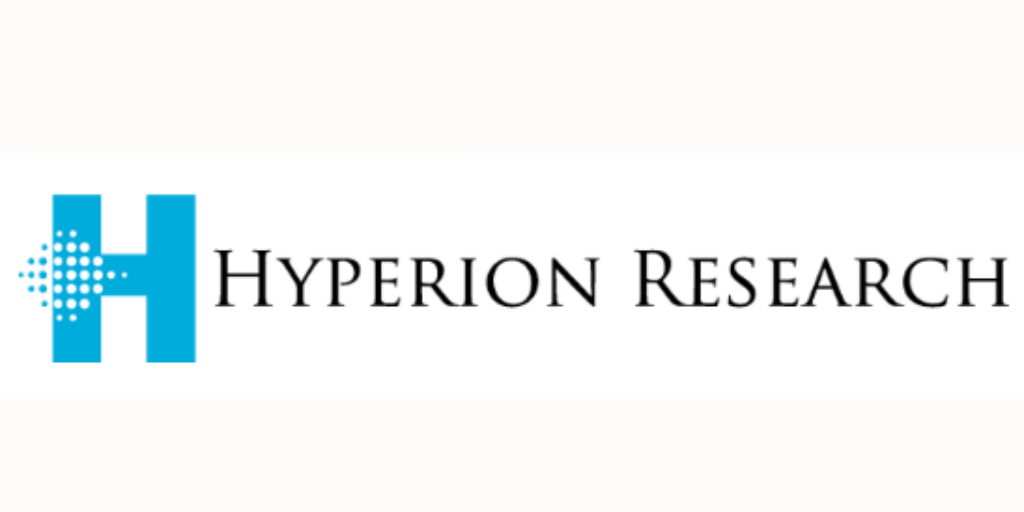HPC industry analyst firm Hyperion Research has announced the recipients of the 19th round of HPC Innovation Excellence Awards.
The 2023 winners are:
- Application of Graph Theory for the Acceleration of a Parallel Neutral Particles and Radiation Transport Algorithm
FedData Technology Solutions
Contact: Dr. Gianluca Longoni
Innovation: FedData Technology Solutions developed a new technique to solve the Linear Boltzmann Equation (LBE) on unstructured mesh grids using graph theory that yields a 10x reduction in the number of iterations required to achieve a converged solution for radiation transport modeling and simulation problems. In addition, a hybrid angular/spatial domain decomposition algorithm has been developed that yields a parallel speed-up of 100X on very challenging benchmark problems, such as the Kobayashi 3-D Benchmarks in Void Ducts. This novel approach utilizes graph theory and advanced parallel computing algorithms to efficiently solve very large 3-D radiation transport problems with extreme accuracy. Potential applications of this new approach are in medical physics, where extreme accuracy is required to accurately predict the radiation dose distribution on a patient.
- Reconnection-Driven Energy Cascade in Magnetohydrodynamic Turbulence
Boston University
Contact: Chuanfei Dong
Innovation: Novel energy transfer mechanism, identified using three-dimensional magnetohydrodynamic turbulence simulation, could help tackle space and astrophysical puzzles, such as solar coronal heating, star formation, and the ability to predict eruptive space weather events. Chuanfei Dong with Boston University performed the world’s largest three-dimensional magnetohydrodynamic turbulence simulation (using NASA supercomputers) that covers spatial scales across four orders of magnitudes (at the cost of ~200 million CPU hours and with ~0.5 trillion grid cells and 500 TB outputs). For the first time in a three-dimensional numerical experiment, he identified a novel energy transfer mechanism, based on the breakup of elongated electric current sheets, that fundamentally changes the classical paradigm of the turbulent energy cascade that has been widely accepted for more than half a century. The resultant steepening of the energy spectra facilitates the transfer of energy from large to small scales. The discovery could improve tackling a range of space and astrophysical puzzles, such as solar coronal heating (which is one of the main goals of NASA’s Parker Solar Probe mission that costs NASA US $1.5 billion), star formation, and the ability to predict eruptive space weather events that can disrupt cell phone service and black out power grids on earth.
- Machine Learning for Antibiotic Discovery Against a Challenging Superbug
McMaster University and Hewlett Packard Enterprise
Contact: Jonathan Stokes
Innovation: Rapid exploration of chemical space using machine learning methods increases probability of discovering new antibacterial molecules. Acinetobacter baumannii is a nosocomial Gram-negative pathogen that often displays multidrug resistance. Discovering new antibiotics against A. baumannii has proven challenging through conventional screening approaches. Fortunately, machine learning methods allow for the rapid exploration of chemical space, increasing the probability of discovering new antibacterial molecules. We screened ~7,500 molecules for those that inhibited the growth of A. baumannii in vitro. We trained a neural network with this growth inhibition dataset and performed in silico predictions for structurally new molecules with activity against A. baumannii. Through this approach, we discovered abaucin, an antibacterial compound with narrow-spectrum activity against A. baumannii. Further investigations revealed that abaucin perturbs lipoprotein trafficking through a mechanism involving LolE. Moreover, abaucin could control an A. baumannii infection in a mouse wound model.
- Mesh Data Layout for Parallel I/O of Finite Volume Data Implemented in OpenFOAM
HLRS and WIKKI GmbH
Contact: Gregor Weiss (HLRS) and Henrik Rusche (WIKKI GmbH)
Innovation: Record CPU core utilization executed with OpenFOAM through an innovative coherent mesh layout designed to facilitate parallel I/O operations. HLRS and WIKKI GmbH, in collaboration, successfully executed the largest OpenFOAM parallel simulation to date, employing a staggering 524,288 CPU cores from HLRS’s supercomputer Hawk. This remarkable achievement, breaking the world record for CPU core utilization with OpenFOAM, was made possible through the implementation of an innovative coherent mesh layout designed to facilitate parallel I/O operations. This groundbreaking work was carried out as part of the exaFOAM project (www.exafoam.eu). The novel coherent mesh design was tailored to meet the specific demands of finite volume discretization, overcoming previous obstacles that had hindered the scalability of OpenFOAM simulations to such an extent.
In its announcement, Hyperion Research said that since 2011, these semi-annual innovation excellence awards have been recognized globally as the touchstone for outstanding achievements that were supported by the use of HPC. Winners have ranged from government and academic research teams to some of the world’s largest corporations. The program’s goals are to showcase HPC-supported, real-world achievements with significant potential for benefiting humanity — achievements that demonstrate the value of HPC for research and development in government, academic or private-sector organizations.
Only a few of the many nominations receive these awards. Judges for the awards, chartered with carefully reviewing each submitted nomination, are the members of the worldwide steering committee of the HPC User Forum, representing leading HPC user organizations in government, academia and industry. Award winners receive a $1,000 honorarium and an award certificate and trophy recognizing their achievements. Hyperion Research welcomes award entries from around the world. Entries may be submitted at any time by completing the application form available at https://www.hpcuserforum.com/innovationaward/. New winners will be announced twice a year. Submissions must contain a clear description of the impact of the project. The HPC User Forum Steering Committee performs an initial ranking of submissions, after which domain and vertical experts are called on, as needed, to evaluate the submissions.
HPC Innovation Excellence Award sponsors include AMD, Ansys, Department of Defense, Department of Energy, Ford Motor Company, HPCwire, Hewlett Packard Enterprise, IBM, insideHPC, Intel, Lenovo, National Science Foundation, NASA, and NVIDIA.




